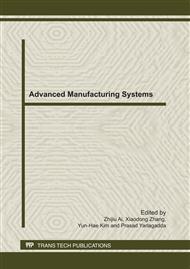p.362
p.367
p.371
p.375
p.379
p.386
p.391
p.396
p.400
Theoretical and Experimental Research on Perforation Remnant Energy
Abstract:
During the perforating and testing combination, the tubing, packer and casing are strongly impacted by shock-wave generated from oil perforators would be damaged. The energy conversion and energy equivalent theories and the underwater explosion energy method are applied to investigate the perforation remnant energy. The theoretical analysis results indicate that the explosion remnant energy of the perforators is the main energy source causing damage of the tubing, packer and casing and the explosion process of the perforators with guns in the oil well can be simplified to the explosion of ordinary explosive charges in the perforation liquid. TNT equivalent and HMX equivalent of perforation remnant energy of three type perforators are obtained by experiments and Cole Formula. Studying results can help to predict dynamic wellbore behaviors and provide a reference for designing the perforation program.
Info:
Periodical:
Pages:
379-385
Citation:
Online since:
September 2011
Authors:
Price:
Сopyright:
© 2011 Trans Tech Publications Ltd. All Rights Reserved
Share:
Citation:


